Commentaries /
LFS November 2023: Weaknesses in Canada’s economy prevail as unemployment edges higher
LFS November 2023: Weaknesses in Canada’s economy prevail as unemployment edges higher
Despite job growth exceeding both trend and market expectations at 25K, the report is indicative of the continuing loss of momentum and broader weakness in Canada’s economy.



Marwa Abdou
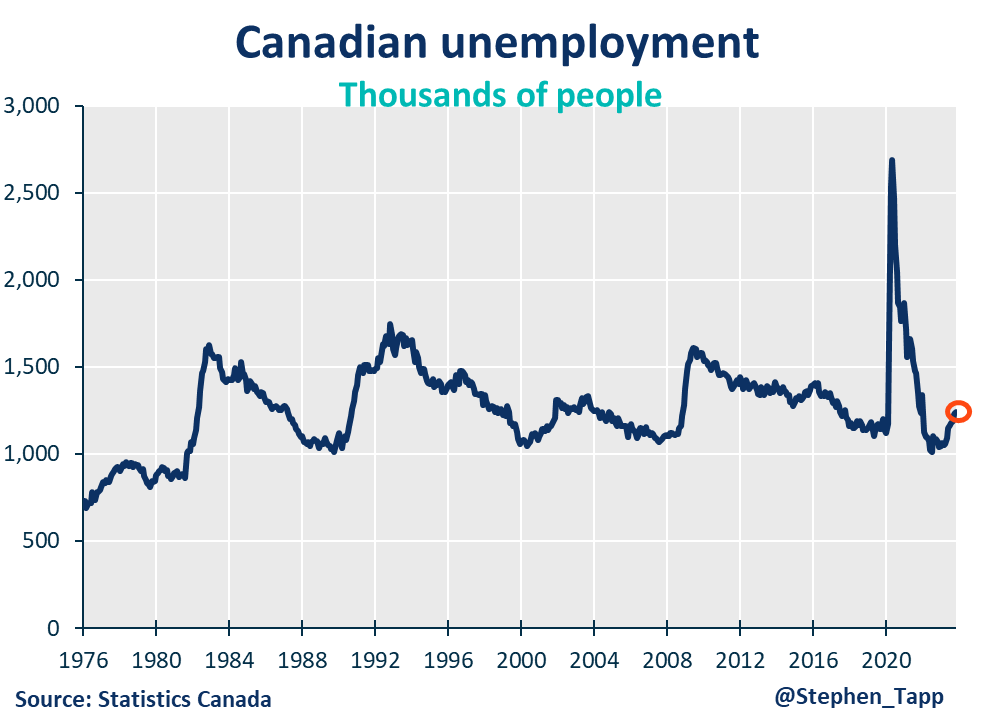
Despite job growth exceeding both trend and market expectations at 25K, the report is indicative of the continuing loss of momentum and broader weakness in Canada’s economy. All in all, as we near the end of a tumultuous year, the contrast from its beginning is stark, with a cumulative increase of 0.8 percentage points in unemployment since April 2023 (from 5.0%). Still, given the remarkable streak of low unemployment and tightness that had sustained for the better part of the year, it has cushioned us for a picture that more “decent” than bleak.
Marwa Abdou, Senior Research Director, Canadian Chamber of Commerce
KEY TAKEAWAYS
- Continuing its cooling streak, unemployment rate ticked 0.1% higher in November at 5.8% y-o-y as Canadian employment was up by a modest 25K net new jobs.
- Total hours worked fell 0.7% but were up 1.7% y-o-y. Average hourly wages also rose 4.8% as price pressures persist. This was also like the increase recorded in October. Wage growth has remained between 4-5% for most of the year and is showing signs of decline.
- With the slowdown in hiring demand coupled with the country’s ballooning population growth fueling labour supply, were seeing that the absorption of labour has continued to slow – in other words outpacing labour demand.
- By industry, we saw gains in jobs in manufacturing (+28k; +1.6%) as well as construction (+16K; +1.0%) while wholesale and retail trade (-27k; -0.9%) and finance and insurance (-18K; -1.3%) shed jobs.
- By gender, there were some notable gains and losses. Full-time employment increased amongst core-aged (25 to 54 years) women (+34K; 0.6%) while it was offset by decline in part-time work for the same group (-21K; +2.1%)Thiswhile, the employment rate for core-aged men continued its five-month downward streak from June (a total of 0.9 percentage points from 88.2% to 87.3%).
- The survey also reported that, compared with a year ago, unemployed people were more likely to have been laid off – more than two-thirds (68.7%) of those who had worked in November 2022 had been laid off by last month.
- Regionally, provincial employment had a modest increase for the second month in New Brunswick (+2.4K; +0.6%). The slight decline in Prince Edward Island (+1.3K; +1.4%) came as a break from a four-month steady streak of increases (June to September) and an abrupt no-growth October. We also saw little change in Quebec and Ontario.
SUMMARY TABLES
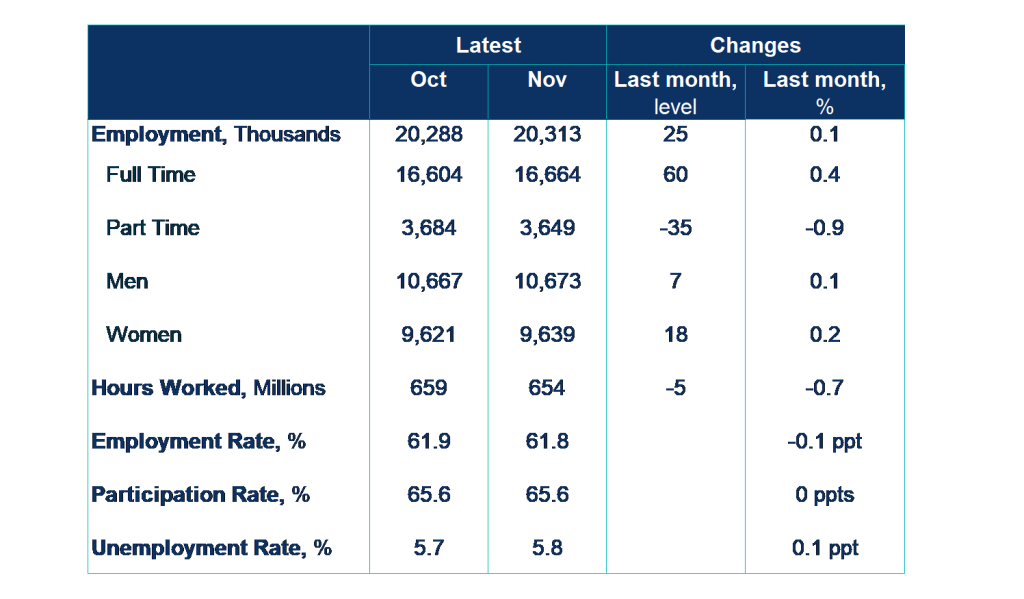

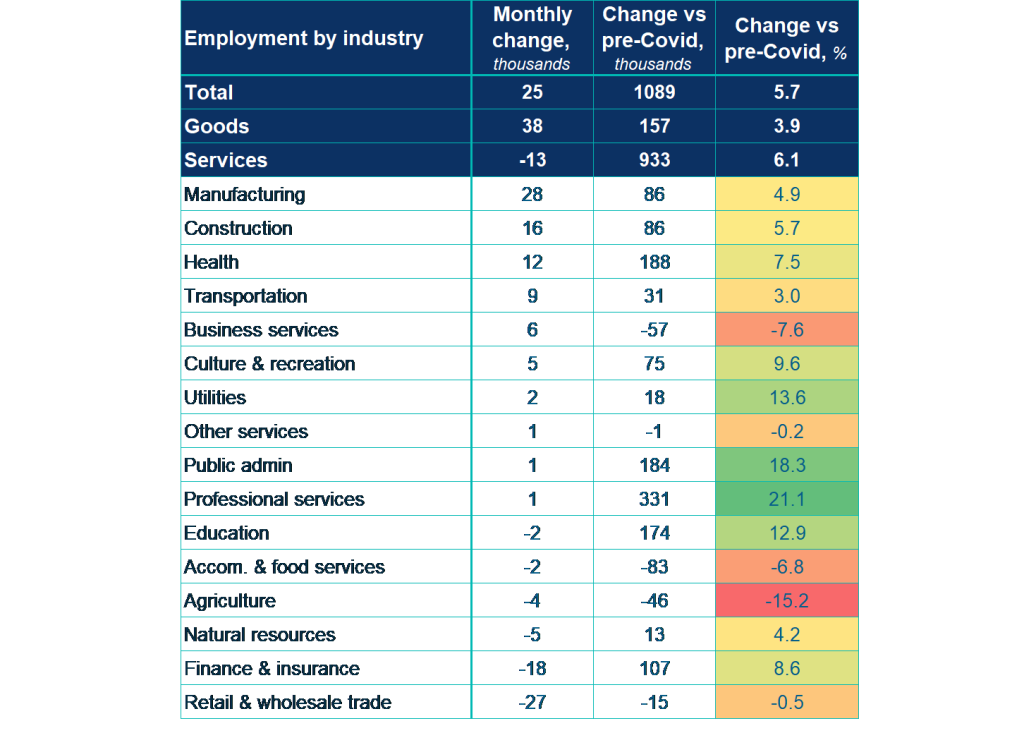
MORE LABOUR CHARTS
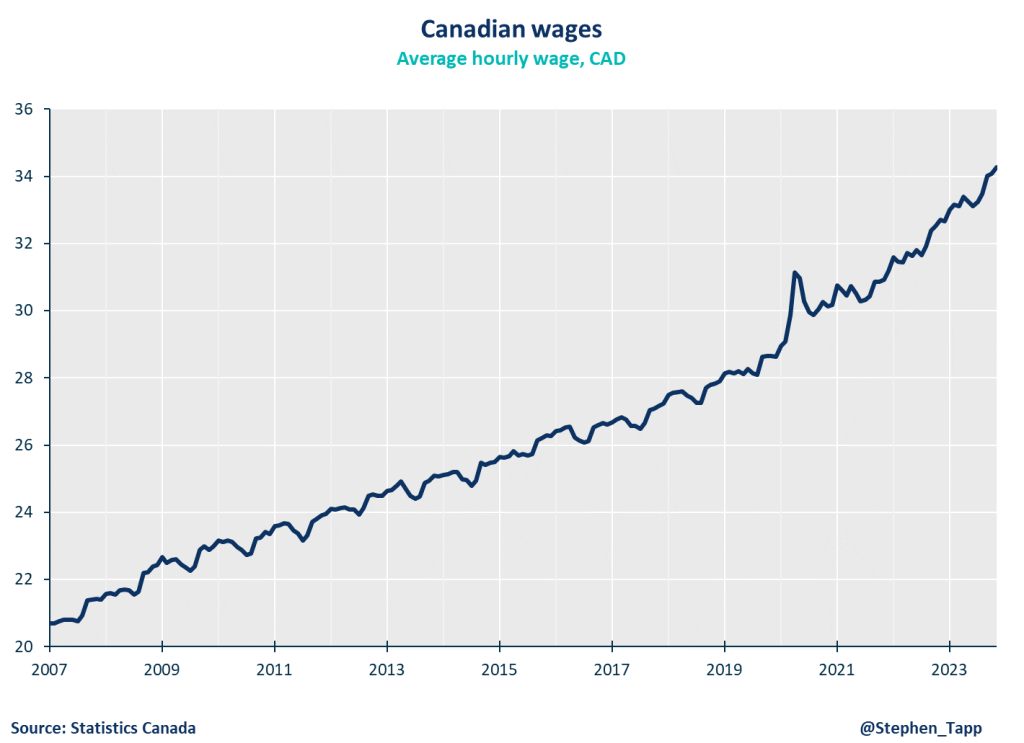
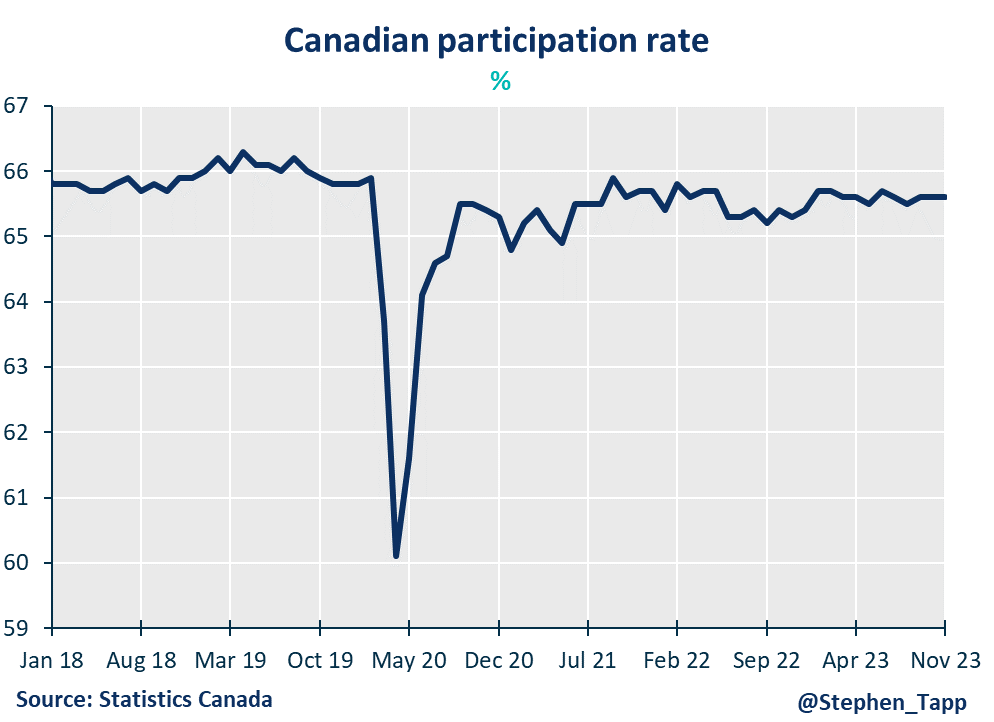
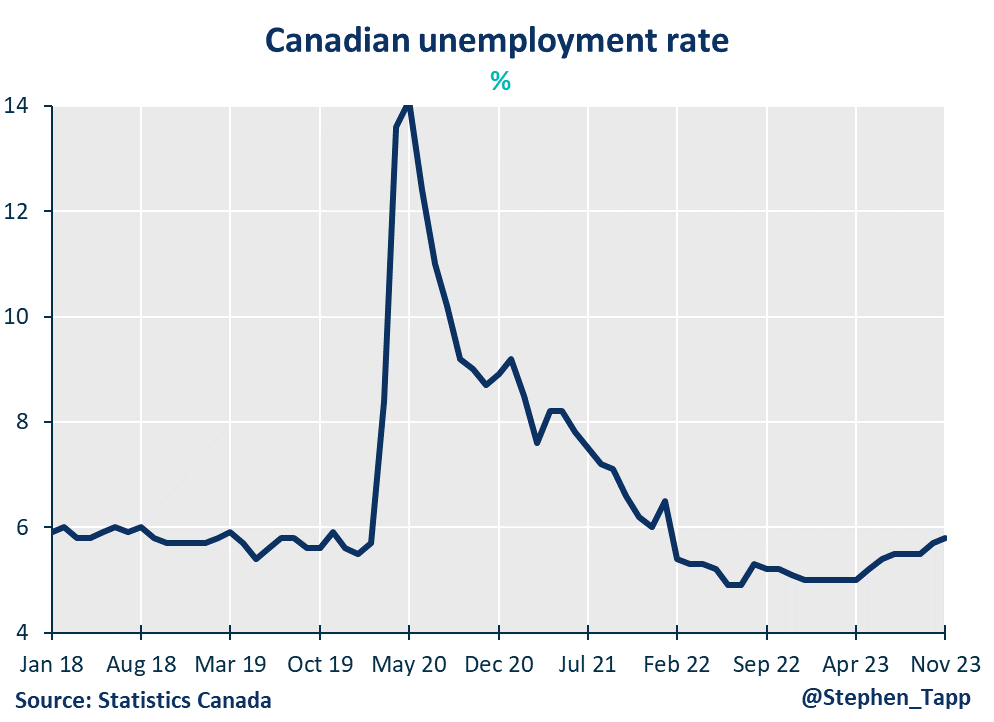


Other Commentaries

Oct 19, 2022
September 2022 Consumer Price Index data: Food and services prices still rising, no progress on core inflation

Sep 20, 2022
August 2022 Consumer Price Index data: Finally some good news on Canadian inflation.

Aug 16, 2022